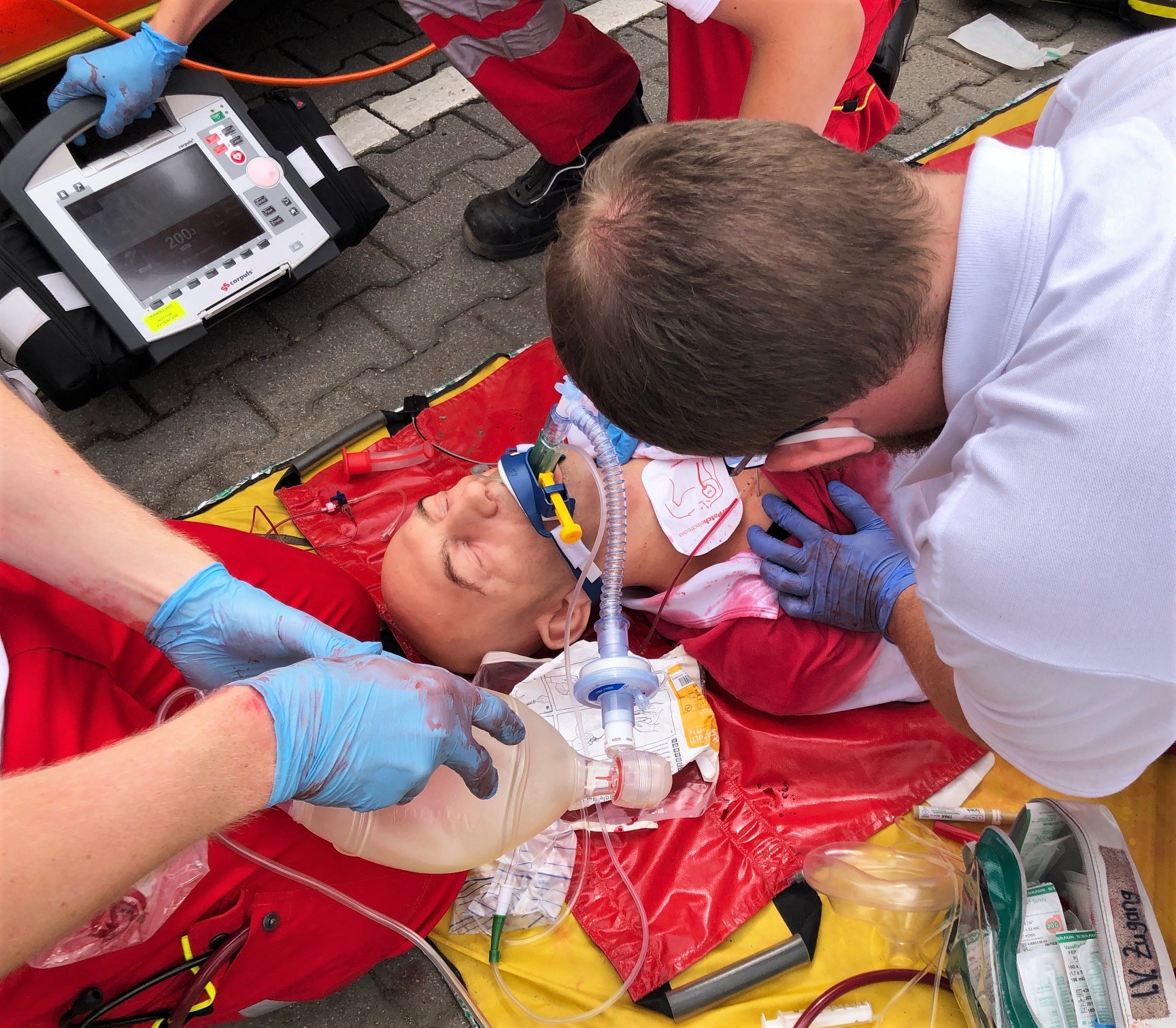
Regular training and exercises are standard at the ASB Mannheim/Rhine-Neckar Region
Diego is in really bad shape. He was the victim of a violent crime. The background is still completely unclear. He has a traumatic circulatory arrest due to severe bleeding. But the rescue team from ASB Mannheim/Rhine-Neckar Region has everything under control. Diego is intubated and resuscitated. The rescuers keep him stable until a rescue helicopter lands. Every second counts, and communication within the team is crucial. Clear information and precise agreements are important. A police officer who has completed a first aid course is also involved. Every move is perfect, Diego can be transferred to the rescue helicopter alive. The chances are good that he will recover.
Realistic and regular exercises are very important
"Our exercises and advanced training courses have to be as real as possible," says Constantin Hettinger, head of the ASB Mannheim/Rhein-Neckar training rescue station. That's why Diego looks so "lifelike." The patient simulator is prepared in advance with artificial blood and equipped with a bleeding wound. Background sounds are played over a loudspeaker, such as the noise on a highway or the landing of the helicopter. "Diego often dies here," smiles Constantin Hettinger. No wonder, Diego has to be used for exercises all the time. Invasive measures are learned on the patient simulator, such as intubating a person or resuscitation. The rescue team also has to stop heavy bleeding and stabilize the circulation. Constantin Hettinger observes every step and takes notes. The case study is discussed in detail, and possible mistakes are analyzed and corrected. So that every move is right in an emergency.
Focus on careful training and continuing education
The ASB Mannheim/Rhine-Neckar Region not only attaches importance to the best possible training, but also to demanding further training for all paramedics and emergency paramedics. For example, as part of the annual training or a federal exercise organized by the Federal Association ASB. "Trained paramedics and emergency paramedics must complete at least 30 mandatory hours per year," explains Constantin Hettinger. Each exercise has a different focus and content. Every two weeks, a deployment of different scenarios is rehearsed in the courtyard and teaching rooms of the rescue station in Mannheim-Käfertal. Training to become a paramedic usually takes three months, while training to become an emergency paramedic takes three years. Currently, 59 young people are being trained as emergency paramedics. At ASB Mannheim/Rhine-Neckar Region , around 300 employees work as paramedics or emergency paramedics. A total of 8 ambulances are stationed at four rescue stations in Mannheim, Heidelberg and Hirschberg. The teams from ASB Mannheim/Rhine-Neckar Region are called out around 2000 times a year. The situation on site is always different. "That's exactly why it's so important that we are prepared for everything," says Constantin Hettinger. And that's exactly why Diego plays such a big role in exercises and training. fek
